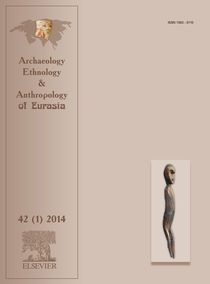
|
Archaeology, Ethnology & Anthropology
of Eurasia
42 (1) 2014
|
Annotation:
Prehistoric Wars and the Origin of Military Power (Based on Archaeological and Historical-
Ethnological Data)
S.N. Korenevsky.
The objective of this study is to correlate historical, ethnological, and archaeological sources regarding the
symbolism of military power. For that purpose the status of Neolithic and Early Bronze Age burials with weapons in the
Danube Basin, Caucasus, and southeastern Europe was analyzed in the context of ethnological theory. These data are
discussed with reference to the typology of warfare in pre-state societies, contrasting primitive wars and later “true”
wars (those involving fi ghting for spoils). Ethnological evidence demonstrates the dramatic rise of the status of military
chiefs. Eventually, as fi ghting for spoils becomes more common, the chiefs rapidly rise to the height of power and acquire
the right to distribute trophies. This tendency is documented by archaeological evidence, art, and mythology, indicating
the developing symbolism of weaponry and military themes and testifying to the rise in the status of persons involved
in warfare, specifi cally military leaders.
Keywords: Ethnology, archaeology, war, spoils, power, weaponry.